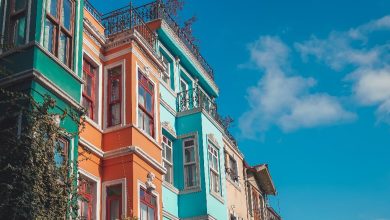Why Rent Villas in Sicily? Spectacular Reasons to Stay in these Sicilian Accommodations

Are you planning your next vacation? Sicily should be up on your holiday bucket list. From its cultural heritage and rich history to delicious cuisine and stunning natural landscapes, you need to rent villas in Sicily to access all these features and attractions, creating cherished experiences.
Contents
Discovering the Enchanting World of Luxury Villa Holidays
If you had to sum up a luxury villa holiday in Sicily, it is an expedition of extremes. A luxury villa holiday allows access to rocky volcanic coastlines, giving way to white sandy beaches. Also, country retreats and historical properties have their unique allure, including lush bushes with uplifting fragrances and historical sites to explore.
Luxury villa holidays also offer access to crumbling architectural treasures of the ancient world. These exquisite accommodations in Sicily provide much-needed privacy, indulgence, and exclusivity, thanks to their attractive features like:
- Ample indoor and outdoor spaces
- Stunning views
- Personalized services
- Private pool with serenity and luxury
- Prime locations
- Ultimate comfort and convenience
- Picturesque coastline and scenic beauty
Do you want to have lifelong private retreats for indulgence? Opt for a luxury villa holiday tailored to your specific needs and requirements.
The Allure of Sicily as a Luxury Villa Holiday Destination
Sicily is a popular destination for travelers. This is because of several reasons. It’s the Mediterranean’s largest island, and also, it’s the Sicilian Mafia’s birthplace. This is a destination that has been populated for centuries. Traces of the ancient Romans, Greeks, Arabs, and other civilizations are still part of the cultural richness of Sicily.
Today, Sicily as a luxury villa destination, boasts stunning beaches where crystal clear waters lap the seashore and offer you a true paradise taste. The Italian island has a collection of cultural delights, including the Valley of Temples and UNESCO Baroque churches in Agrigento and Noto, respectively.
Sicily is also a modern island as it is full of high-end restaurants, cafes, and bars that serve Sicilian cuisine. The captivating landscapes in Sicily also take the island’s allure to the next level. Travelers can enjoy stunning views of mountains, lush bushes, valleys, and more. All these attractive things are accessible from luxury villas in Sicily.
Unveiling the Gems: Luxury Villa Experiences in Sicily
The list of luxury villa options in Sicily is almost endless. Traveling as a couple? Family? Or friends? You have different types of villas to pick from. Get inspired with these Sicily villa holiday ideas and enjoy a memorable vacation.
- Holiday villas in Sicily by sea
- Country holiday villas for rent in the Sicilian countryside
- Holiday homes and apartments in Sicily’s historical destinations
- Romantic villas for couples
- Villas and holiday homes that accept pets
- Villas with spa, wellness, and fitness area
These types of luxury villas feature exclusive amenities for indulgence. Once you arrive at your favorite villa, you’ll enjoy several key features such as:
- Private swimming pool
- Dedicated crew
- Spa and wellness facilities
- Well-equipped kitchens
- Automated entertainment systems
All these amenities blend seamlessly to provide travelers with bespoke experiences in Sicilian villas.
Immersing in Unparalleled Luxury: Activities and Experiences
You are opening the door to unforgettable moments in Sicily, if you are planning to book a villa for your next holiday. Sicily’s exclusive activities for villa holidays meet the needs of a diverse collection of visitors. Luxury experiences in Sicily range from events and festivals like the Almond Blossom in Agrigento and the Li Schietti Festival in Terrasini, Palermo.
Sicily’s cuisine is another perfect way to experience the destination’s culture, shaped by the Greeks, Arabs, Romans, and more. Pasta alla norma is one of the colorful dishes available, as well as traditional recipes like rice arancini and fish such as swordfish rolls. Wine aficionados are also catered for. They’ll find top varieties like Etna Rosso and Nero d’Avola.
Sicily’s climate is favorable, especially in October and early November. And its three thousand years of history are worth exploring, not to forget its natural landscape that provides thousands of places to visit and stunning architecture influenced by numerous civilizations.
Planning Your Dream Luxury Villa Holiday in Sicily
A successful journey through space, time, ancient and modern, can only be successful with excellent planning. When planning a luxury villa holiday in Sicily, you need some tips for a memorable stay. These tips include:
- The best time to visit: From March to June and October to November. This is the time when the climate is ideal, and more events and festivals occur.
- Villa selection criteria: When selecting your luxury villa, you need to consider key features like amenities, accessibility to local attractions, experiences it offers, the type you need, and bespoke services in Sicilian villas.
- Transportation options: Boat, train, car, and plane.
To maximize your luxury villa holiday, you need to visit local attractions like Mount Etna and utilize bespoke services in Sicilian villas such as private chef, maid services, and babysitter. Also, you can explore various recommended itineraries like Agrigento, Mount Etna, and Palermo to make your vacation memorable.
Conclusion
You have discovered the enchanting world of luxury villa vacations, explored Sicily’s allure, unveiled the gems, and immersed yourself in unparalleled luxury. And finally, you have had the chance to learn how to plan a luxury villa holiday in Sicily.
That means you can plan and execute a successful villa holiday on this Italian island. Do you want to unlock a universe of bizarre memories, relaxation, and indulgence? Plan your dream luxury villa holiday today.






